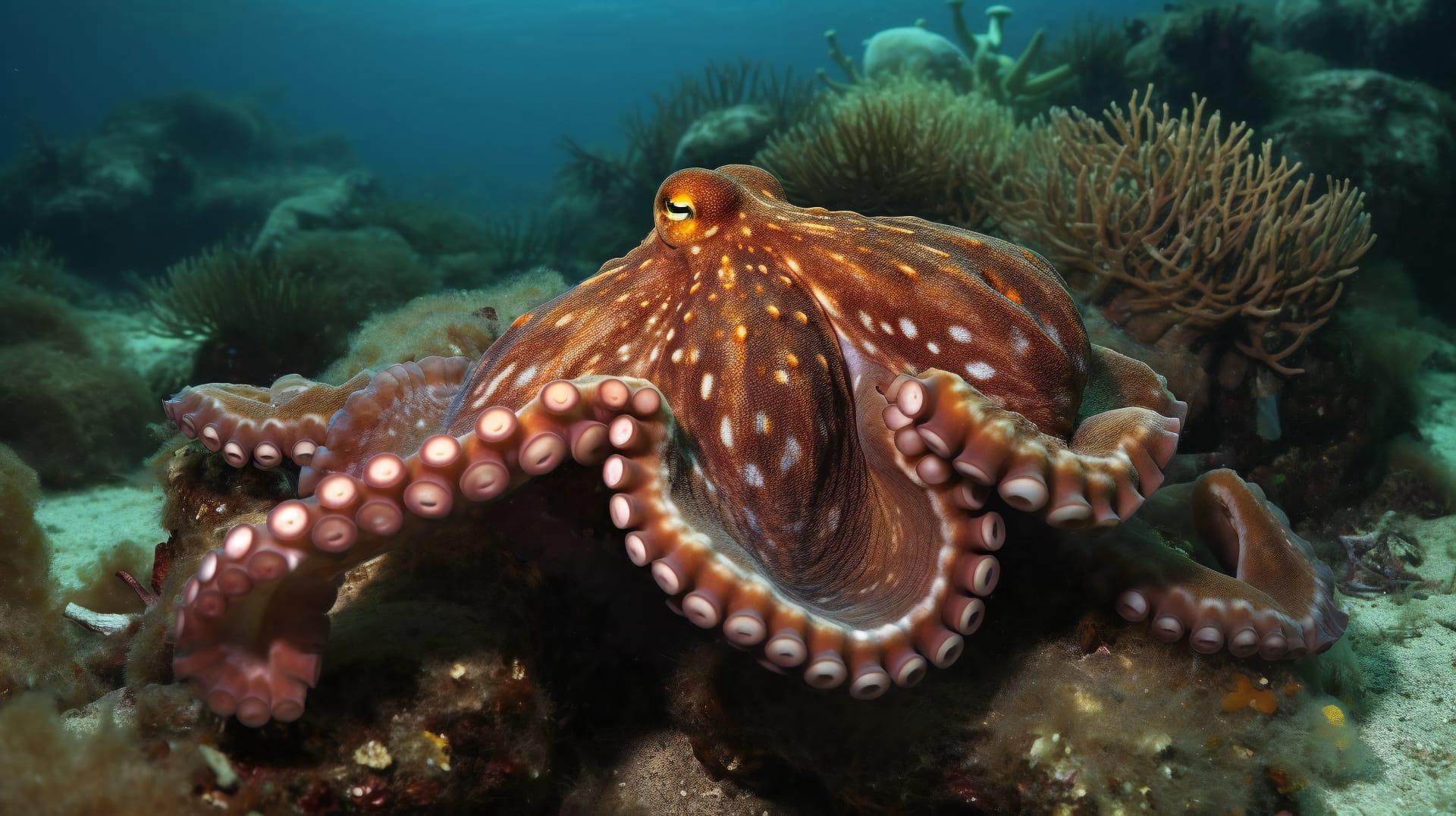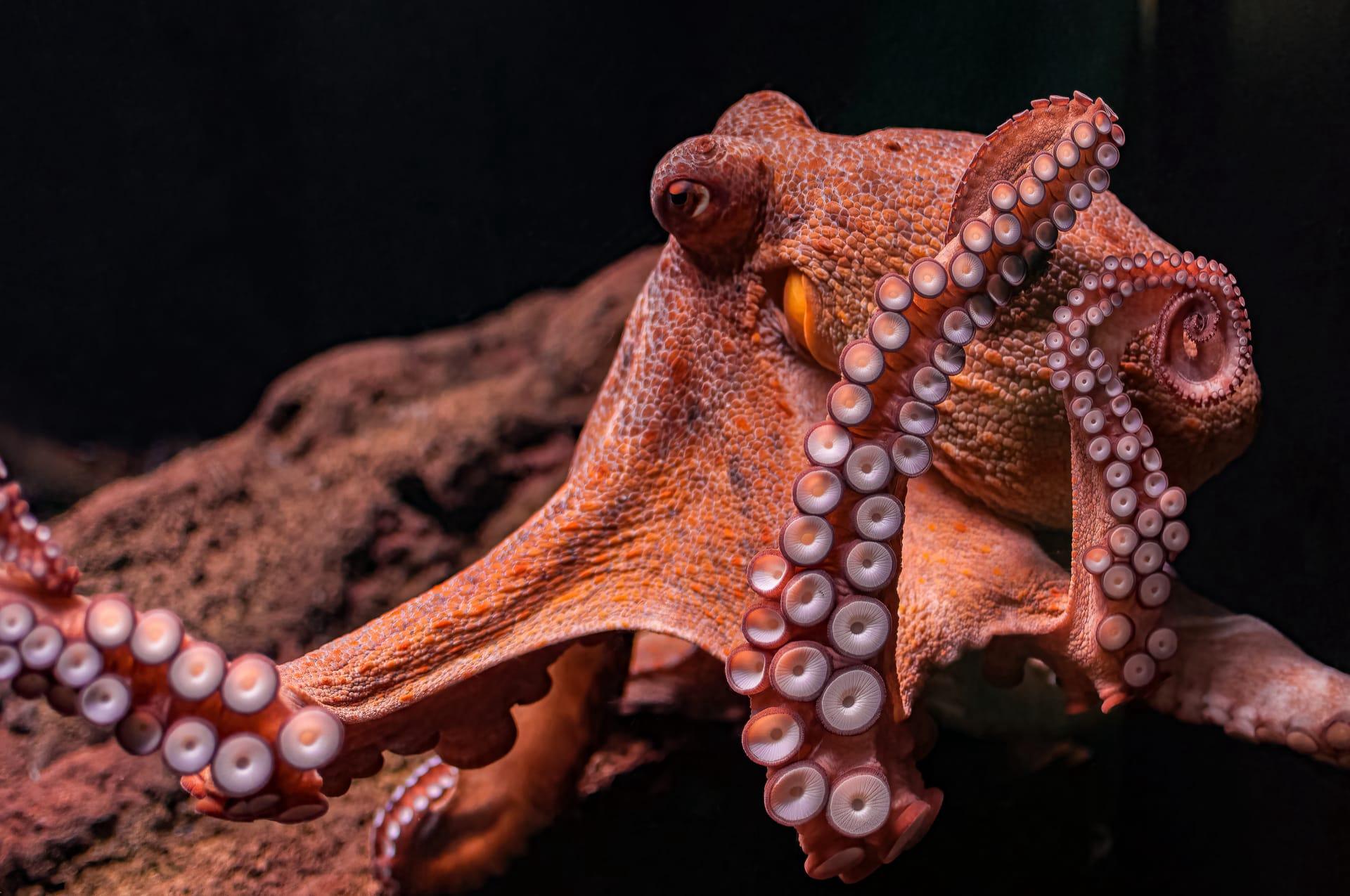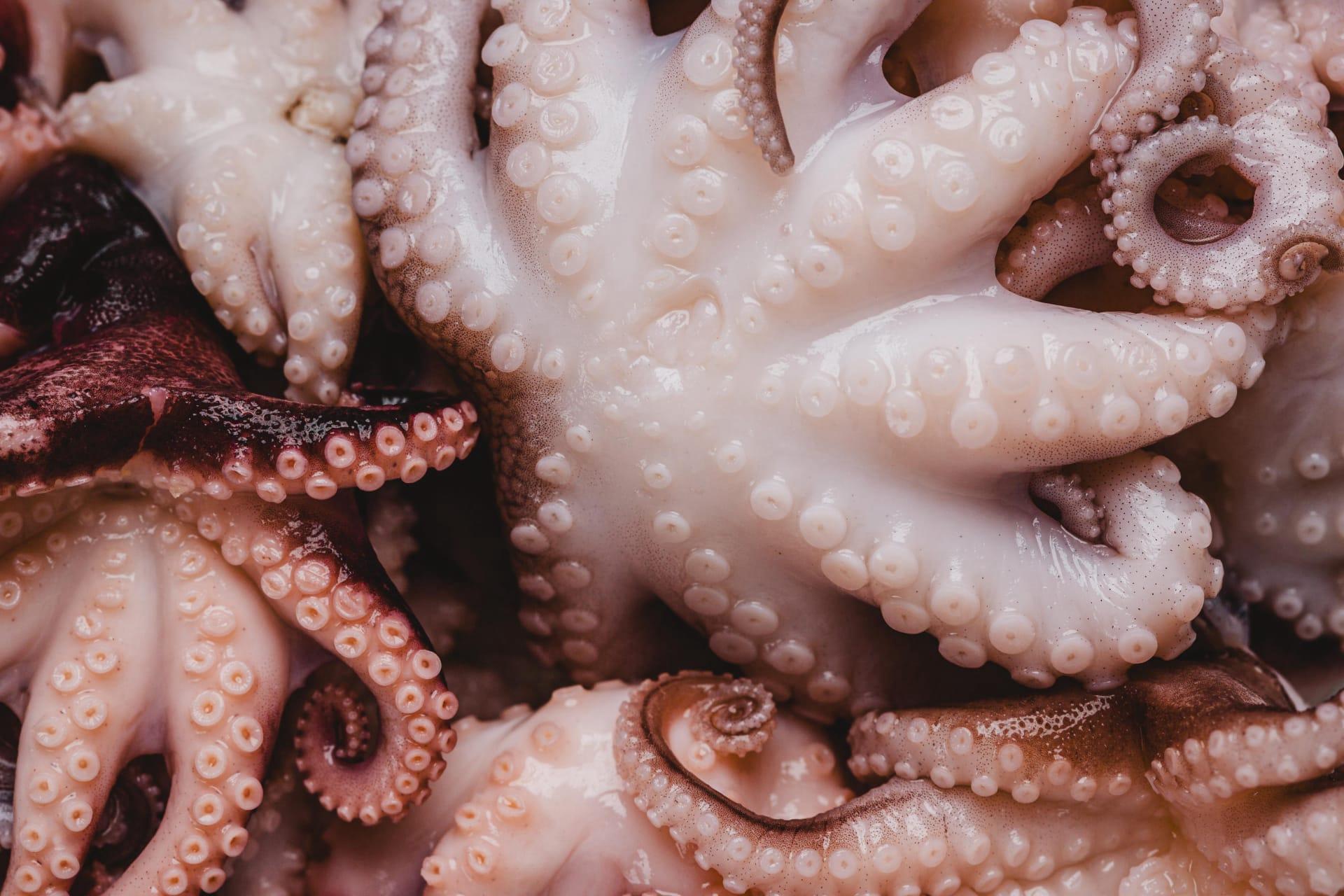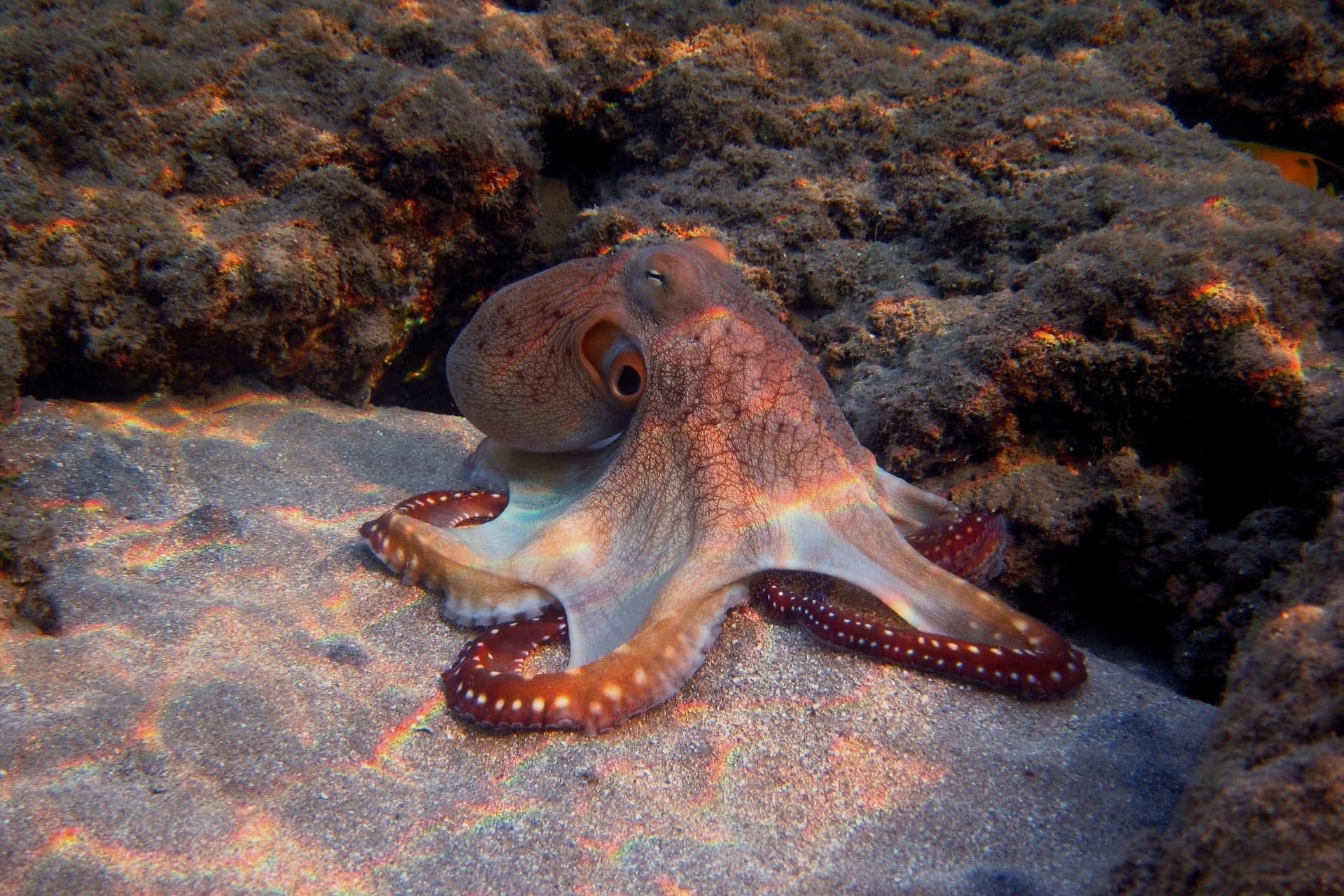Octopus Characteristics
- Home /
- Mini Encyclopedia /
- Animal /
- Octopus Characteristics
1
Octopuses are fascinating creatures, known for their unique biology and behavior. They belong to the class Cephalopoda, which also includes squids and cuttlefish. Octopuses vary greatly in size, with the smallest species measuring about an inch long, while the giant Pacific octopus can grow up to 16 feet across when measuring its arm span. Their lifespan also varies; some may live as little as six months, while others, like the larger species, can live up to five years.
The most remarkable organ of an octopus is its brain and nervous system. Octopuses have a highly complex brain, with a large part dedicated to processing information from their tactile environment. This, combined with a nervous system that allows them to control their soft bodies with extraordinary precision, gives them exceptional problem-solving and learning abilities. Additionally, each of their eight arms contains a mini-brain, allowing them to move independently and react to stimuli even when severed from the main brain.

2
Question: How do octopuses change color?
Answer: Octopuses have specialized cells in their skin called chromatophores, which contain pigments of various colors. These cells can expand or contract to change the color and pattern of the octopus's skin. This ability is not just for camouflage but also for communication and hunting. Beneath the chromatophores are cells called iridophores and leucophores, which reflect light, adding to the complexity of color changes. This rapid transformation, often synchronized with the environment, makes them one of the most elusive and adaptive creatures in the ocean.

3
Octopuses are known for their fluid and efficient movement in water. They primarily move by expelling water from their mantle through a funnel-like structure, allowing them to swim swiftly. This jet propulsion method is their fastest mode of travel. However, they also crawl along the sea floor using their arms. Their soft bodies enable them to squeeze through tight spaces, making them adept at navigating complex environments.
For hunting, octopuses use a combination of stealth, speed, and intelligence. They often use their ability to blend into their surroundings to ambush prey. Once within reach, they use their long arms to envelop and secure their target, pulling it towards their beak-like mouth. They inject a venom that both subdues the prey and begins the digestion process. Their diet mainly consists of crabs, clams, and small fish.

4
Octopuses inhabit a wide range of ocean environments, from shallow reefs to the deep sea. They are found in all the world's oceans, but each species has adapted to specific environmental conditions. Some prefer the warmer waters of coral reefs, while others reside in the cold depths. They typically seek out dens or crevices for protection and as a base for hunting.
Reproduction is a unique aspect of octopus life. Males use a specialized arm called a hectocotylus to transfer sperm packets to females. After mating, the female lays thousands of eggs and guards them diligently. She aerates and cleans the eggs until they hatch but does not eat during this period. After the eggs hatch, the female's life cycle typically ends, while the young octopuses fend for themselves.

5
Book: "The Soul of an Octopus" by Sy Montgomery, published in 2015, offers a deep dive into the emotional and physical world of octopuses. This book, set mainly in the United States, explores the bonds between humans and octopuses, delving into the intellectual and emotional capabilities of these creatures. Montgomery shares stories of individual octopuses at an aquarium and discusses the scientific understanding of their consciousness.
Book: "Other Minds: The Octopus, the Sea, and the Deep Origins of Consciousness" by Peter Godfrey-Smith, published in 2016, combines philosophy, science, and personal encounters. Godfrey-Smith, an Australian philosopher and diver, explores the evolution of the mind and consciousness, using the octopus as a key example. The book is a fascinating journey into the world of cephalopods, discussing how their minds might work and what this tells us about the nature of intelligence and consciousness.